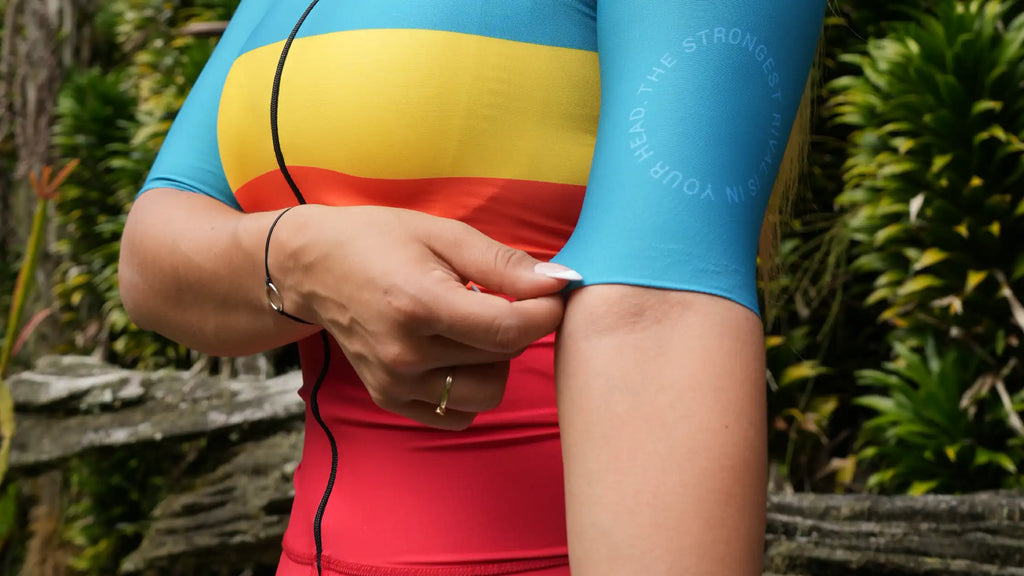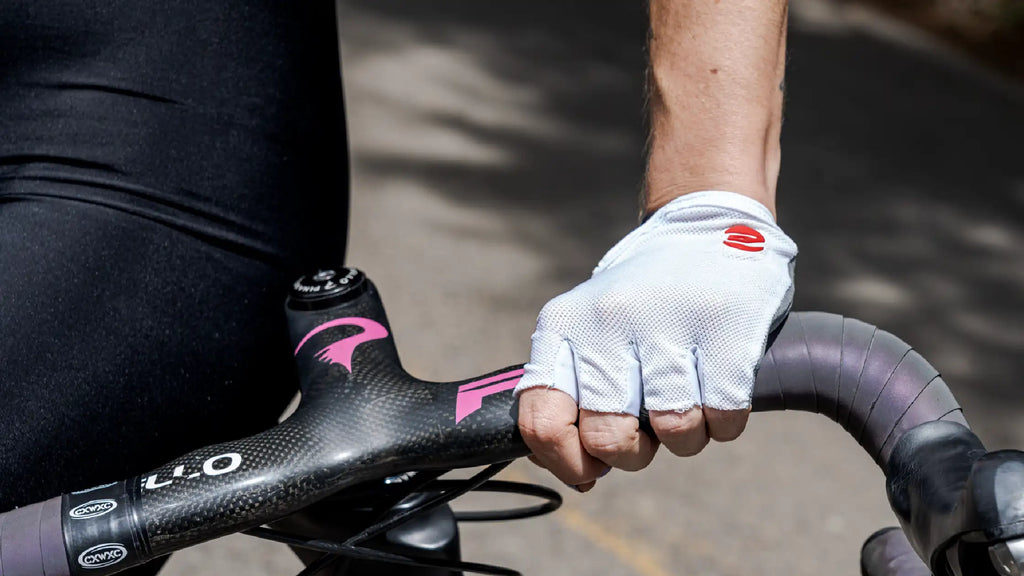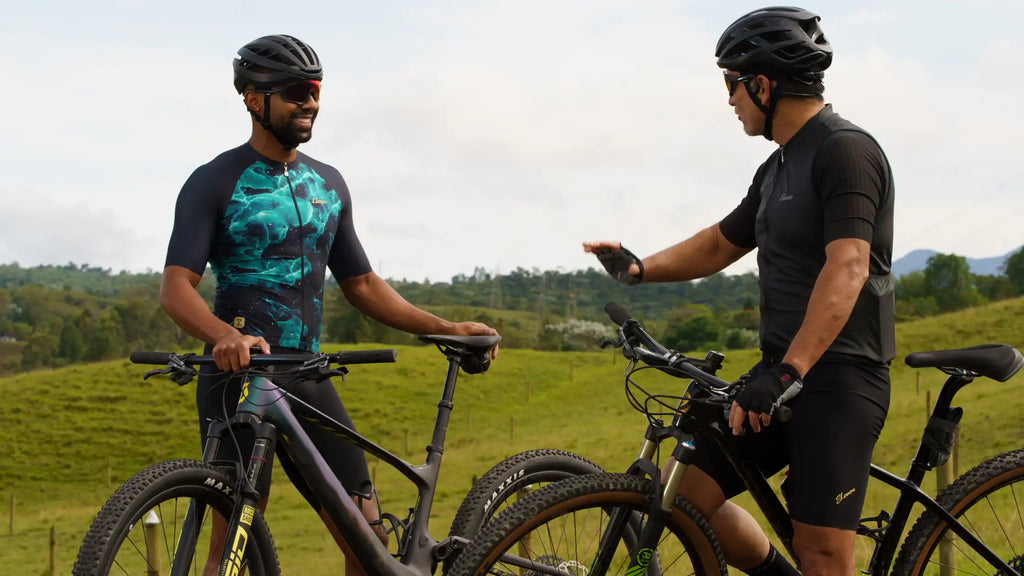
Tips to improve your downhill mountain bike technique

Downhill mountain biking is an exciting and challenging experience that offers a perfect mix of adrenaline and technical skill. With the ability to conquer varied and challenging terrain, downhill offers riders the opportunity to explore nature in a unique and exciting way. However, mastering downhill technique is no easy feat and requires skill, practice, and a solid understanding of mountain biking fundamentals.
In this article, we'll explore a series of tips and techniques designed to help you improve your downhill mountain bike skill. From proper position on the bike to choosing the optimal line and navigating challenging corners, you'll learn how to tackle descents with confidence and style. Additionally, we will discuss the importance of maintaining focus and confidence, two key elements to reaching your full potential in downhill mountain biking.
Get ready to immerse yourself in the exciting world of downhill mountain biking and discover how you can take your skill and confidence to the next level. Let's roll!
1. Master the proper position
Proper position on the bike is essential to successfully facing the challenges of downhill mountain biking. Adopting a correct posture allows you to maintain balance, absorb the impacts of the terrain and have optimal control over your bicycle. Here are some key aspects to keep in mind to master this position:
to. Bend elbows and knees
Keep your elbows and knees slightly bent at all times. This flex acts as a natural suspension system , allowing you to better absorb shocks and vibrations from uneven terrain. Additionally, this flexibility allows you to react quickly to changes in the terrain and maintain better control over the bike.
b. Lower the center of gravity
Lower your center of gravity by leaning your body back and keeping your weight on the pedals. This provides you with stability and prevents you from feeling unbalanced on steep or technical terrain. Keep your heels slightly low to maintain solid contact with the pedals and prevent them from slipping.
c. Look forward
Keep your eyes forward, scanning the terrain for obstacles and changes in the line. Keeping your eyes on what's ahead allows you to anticipate necessary maneuvers and react proactively to challenges along the way. Avoid looking directly at the front wheel , as this can reduce your ability to react and compromise your balance.
d. Relax your shoulders
Keep your shoulders relaxed and loose, avoiding stiffness that can negatively affect your handling. Shoulder tension can hinder your body's ability to respond to obstacles and reduce the precision of your movements. With your shoulders relaxed, you will be able to move more freely and efficiently on the bike.
and. Adjust position according to terrain
Adapt your position on the bike depending on the type of terrain you are facing. On steep, technical terrain, lean your weight back to maintain traction on the rear wheel and prevent it from lifting. On flat or uphill sections, you can shift your weight forward to improve traction on the front wheel and make climbing easier.
F. Practice the posture in different conditions
Spend time practicing and perfecting your stance in a variety of conditions and terrain. Constant practice will help you develop the strength and coordination necessary to maintain an optimal position at all times, even when you are facing difficult challenges on the downhill.
2. Control the speed
Speed control is crucial to maintaining safety and control during downhill mountain biking. The ability to modulate speed effectively allows you to adapt to different types of terrain and situations on the road. Here are some tips to improve your ability to control speed:
to. Use the brakes progressively
Instead of applying the brakes harshly, learn to use them smoothly and progressively. This allows you to maintain control over the bike and avoid wheel lockups that can result in skidding or loss of traction. It uses both brakes in a balanced way, with a slight emphasis on the front brake for more effective braking.
b. Learn to modulate brake pressure
Experiment with the amount of pressure you apply to the brakes to adjust your speed as necessary . On looser or steeper terrain, you may need to apply more pressure to safely slow down . On flatter terrain or with better traction, you can afford to brake less intensely to maintain a constant pace.
c. Practice braking in different conditions
Spend time practicing braking in a variety of conditions and terrain, including dry, wet, rocky and loose terrain. This will help you become familiar with how your brakes respond in different situations and develop the sensitivity to adjust your technique as necessary.
d. Anticipate braking sections
Scan the terrain ahead and anticipate sections where you'll need to brake early. This allows you to plan your braking in advance and avoid sudden braking that could compromise your stability. Learn to read the terrain and identify landmarks, such as sharp turns or steep descents, where you will need to slow down.
and. Practice braking in a straight line and in curves
Practice braking both in a straight line and in curves to develop confidence and skill in both situations. Braking in a straight line allows you to stop safely on flat terrain or gentle descents, while braking in curves requires more delicate handling and anticipation to avoid skidding or loss of traction.
F. Adjusts body position during braking
When braking, adjust your position on the bike to maintain balance and stability. Lean your weight slightly rearward to prevent the front wheel from locking and lifting , thus maintaining traction on both wheels. Keep your elbows and knees bent to absorb impacts and maintain control of the bike.
g. Practice braking technique on controlled descents
Spend time practicing braking technique on safe, controlled descents, starting with gentle descents and gradually increasing the difficulty as you gain confidence. Practice braking in different parts of the corner and on different degrees of gradient to become familiar with how your brakes respond in different situations.
3. Choose the right line
Choosing the right line is essential to successfully navigating mountain bike descents. The correct line allows you to minimize obstacles and maintain traction on varied terrain. Here are some tips to improve your ability to choose the right line:
to. Assess the terrain ahead
Before entering a downhill section, scan the terrain ahead to identify the most suitable line. Look for the best route, avoiding large rocks, exposed roots and other obstacles that could compromise your safety or speed.
b. Anticipate changes on the ground
Learn to read the terrain and anticipate the changes that are coming. Pay attention to variations in slope, soil texture, and the presence of obstacles to adjust your line accordingly . Anticipating changes allows you to maintain a smooth flow and avoid unpleasant surprises along the way.
c. Adapt the line on the fly
Maintain the flexibility to adapt your line on the fly as needed. If you encounter an unexpected obstacle or sudden change in terrain, adjust your trajectory to safely avoid it. The ability to make quick decisions and change lanes allows you to maintain momentum and control at all times.
d. Practice line selection in different conditions
Spend time practicing line selection in a variety of conditions and terrain. Experiment with different routes and discover how each one affects your speed and fluidity on the descent. The more you practice, the more confidence you will gain in your ability to choose the right line in any situation.
4. Work on your curve technique
Curves are a key part of downhill mountain biking, and mastering them allows you to maintain speed and control on twisty terrain. Here are some tips to improve your curve technique:
to. Lean the bike towards the inside of the curve
When approaching a turn, lean the bike toward the inside of the turn while keeping your weight centered on the pedals. This allows you to maintain traction on the wheels and maintain a smooth line through the turn. Practice leaning the bike gradually and maintaining controlled balance to improve your cornering ability.
b. Use the handlebars to guide the bike
Use the handlebars to steer the bike through the turn, maintaining a smooth and precise line. Aim for the corner exit point and use smooth, controlled movements to maintain the desired line. Avoid making sudden turns or exaggerated movements that could compromise your stability.
c. Look around the curve
Keep your eyes forward and look around the curve to where you want to go. Visualizing your line and focusing on the exit point helps you maintain a smooth flow through the turn and anticipate changes in the terrain ahead. Avoid looking directly at your wheels and instead rely on your periphery for balance.
d. Practice the cornering technique on different types of terrain
Spend time practicing your cornering technique on a variety of terrain, from wide, open turns to tight, technical turns. Experiment with different speeds and lean angles to get familiar with how your bike responds in each situation. Constant practice will help you perfect your technique and feel more confident in all types of curves.
5. Practice jumping technique
Mastering the mountain bike jumping technique allows you to overcome obstacles fluidly and safely, adding an extra dose of excitement to your descents. Here are some tips to improve your jumping technique:
to. Learn the proper position
Before attempting larger jumps, familiarize yourself with the correct position on the bike. Keep your elbows and knees slightly bent and your body centered on the bike. Lean the bike back slightly while keeping your eyes on the takeoff point.
b. Practice on small obstacles
Start by practicing on small obstacles like gentle ramps or small mounds. As you gain confidence, you can gradually increase the difficulty and height of the obstacles.
c. Master the takeoff technique
As you approach the obstacle, flex your legs and compress the suspension to charge energy. Just before takeoff, extend your legs and push down on the pedals while pulling up on the handlebars slightly.
d. Keep your balance in the air
Once in the air, maintain your balance by keeping the bike level and centered beneath you. Keep your eyes on the landing point and prepare your body to absorb the impact by bending your legs.
and. Land softly
As you approach the landing point, bend your legs to absorb the impact and distribute the weight evenly on the bike. Land on both wheels at the same time and maintain control of the bike as you continue down the trail.
6. Stay focused and confident
Concentration and confidence are key to improving your mountain bike downhill technique and overcoming the challenges of the terrain. Here are some tips to stay focused and confident in your abilities:
to. View your line
Before starting a descent, visualize your ideal line and plan your route through the terrain. Keep your eyes forward and focus on key landmarks along the way.
b. Breath deeply
Practice deep, conscious breathing to reduce anxiety and stay calm as you descend. Breathe deeply from your abdomen and exhale slowly to release tension and maintain focus.
c. Trust your training
Remember that you have dedicated time and effort to improving your downhill technique. Trust your training and your abilities to overcome the challenges you encounter along the way.
d. Learn from every descent
Every descent is an opportunity to learn and improve. Make a mental note of what worked well and areas you can improve, and use this information to inform your future practice.
and. Celebrate your achievements
Don't forget to celebrate your achievements, big and small, in downhill mountain biking. Recognize your progress and enjoy the thrill of overcoming new challenges along the way.
In short, improving your mountain bike downhill technique requires practice, patience, and dedication. Follow these tips and you'll see your downhill skill and confidence improve over time. Have fun and stay safe on the slopes!
Always remember to wear the appropriate protective equipment, clothing that provides you with the comfort you need, and respect safety regulations in the mountains. See you on the trails!






































